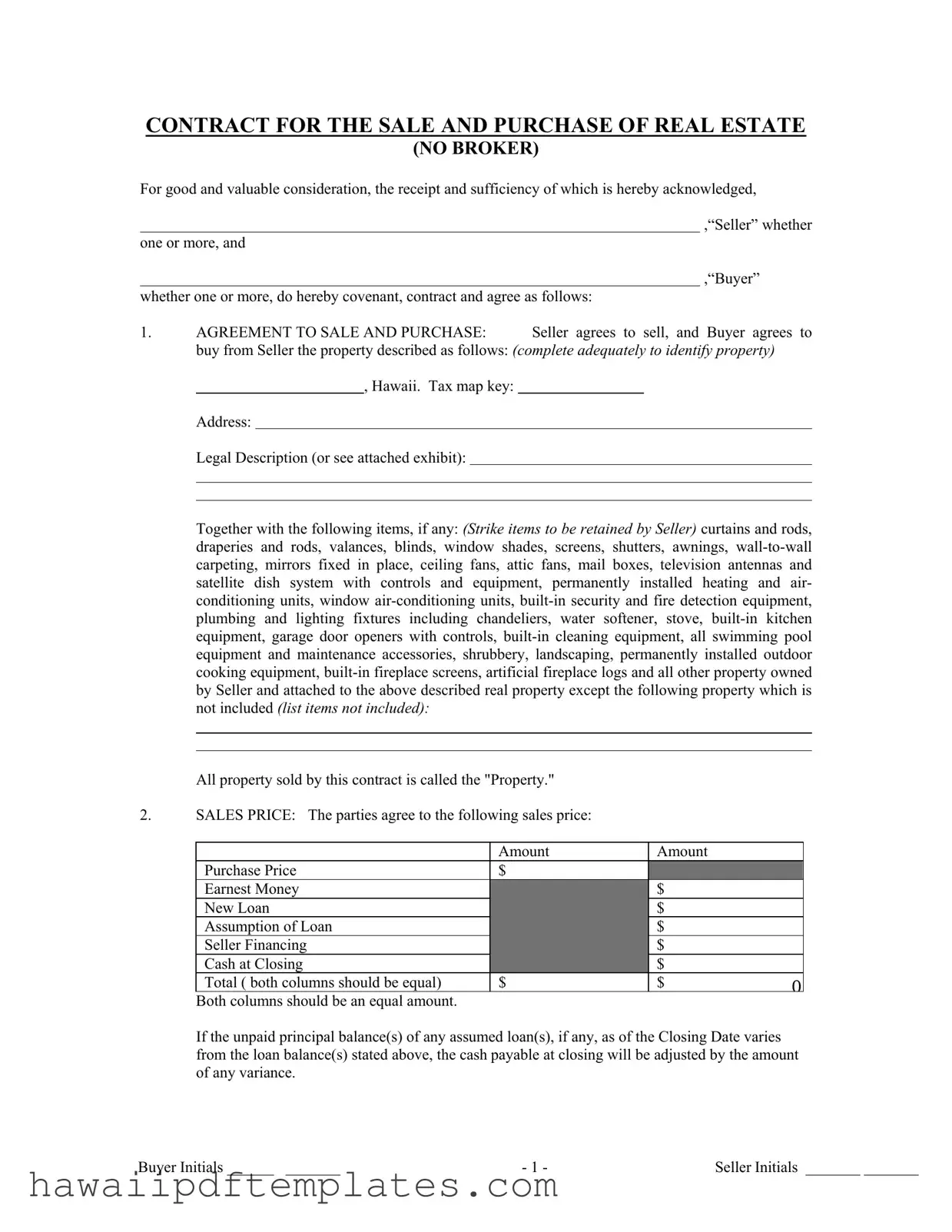Hawaii Agreement Of Sale PDF Form
The Hawaii Agreement of Sale form is a legally binding document that outlines the terms for the sale and purchase of real estate in Hawaii, without the involvement of a broker. This form establishes key details such as the property description, sales price, and financing terms, ensuring both the buyer and seller understand their rights and obligations. To begin the process of completing this form, click the button below.
Customize Form Online
